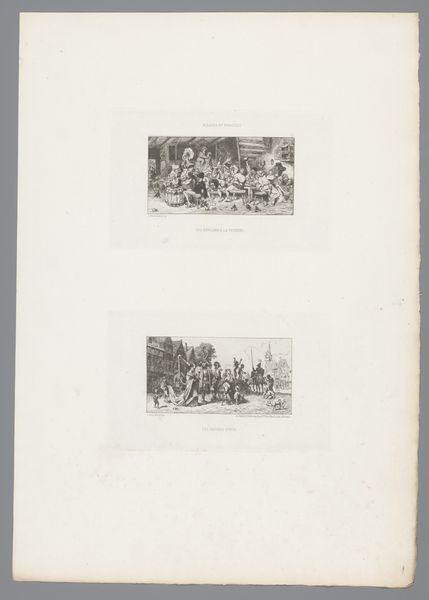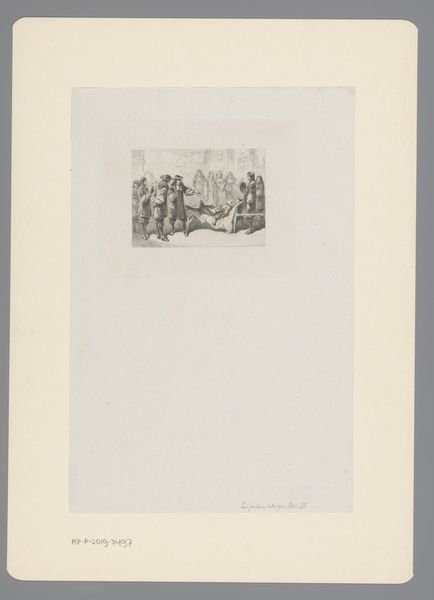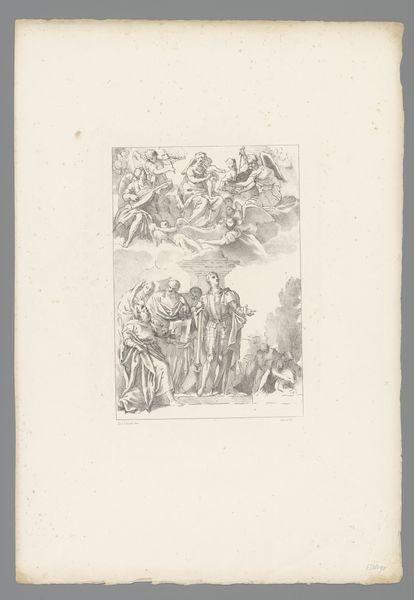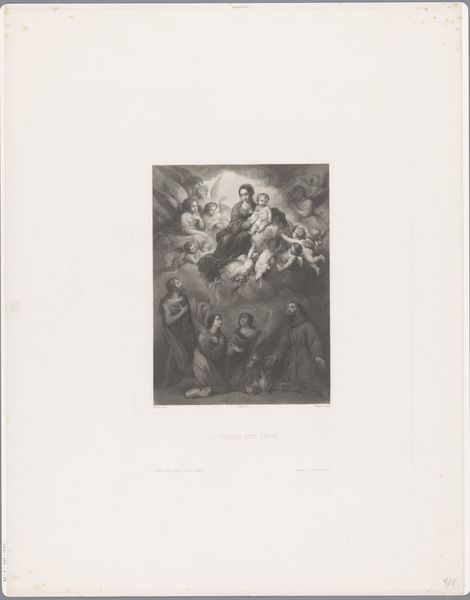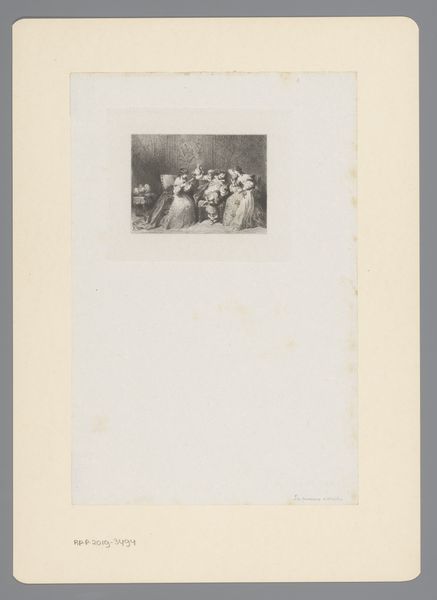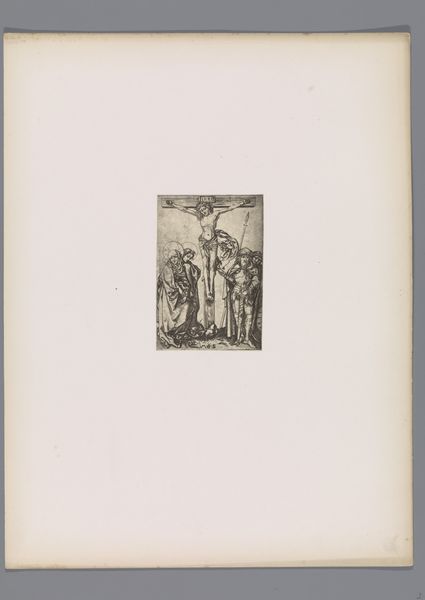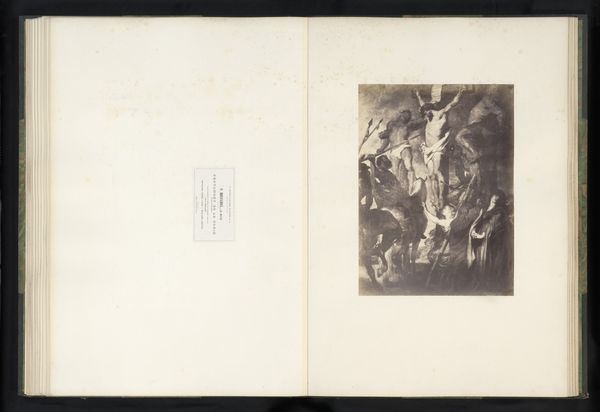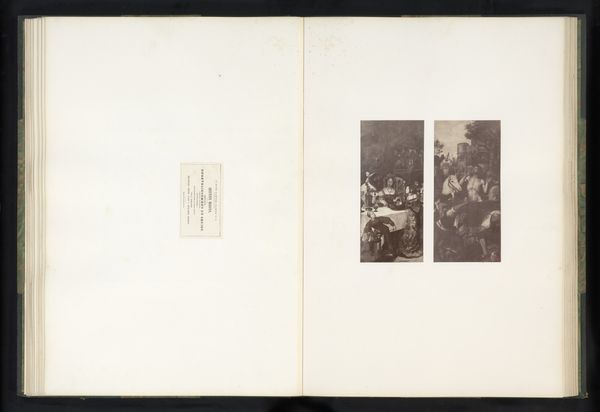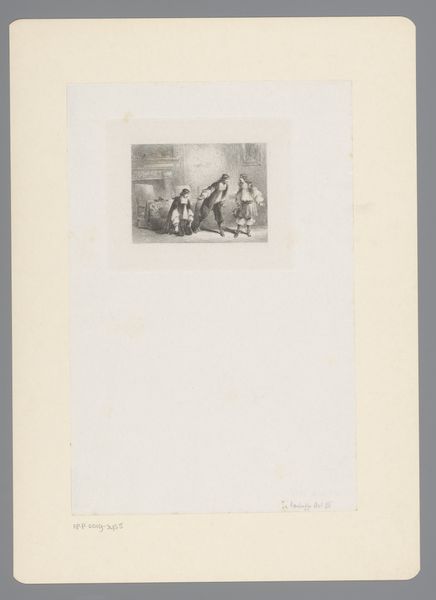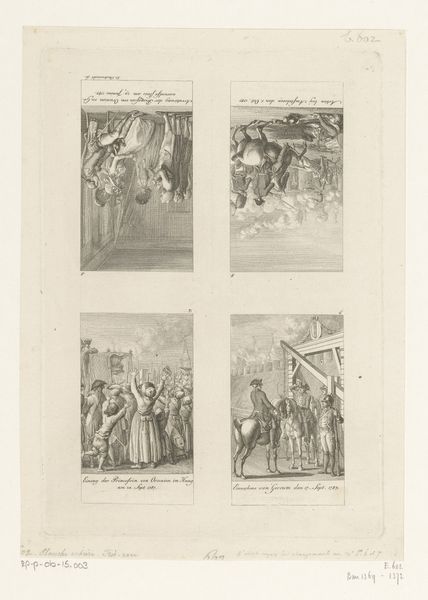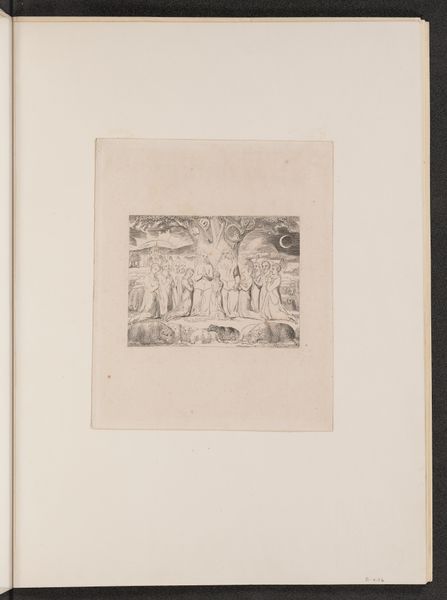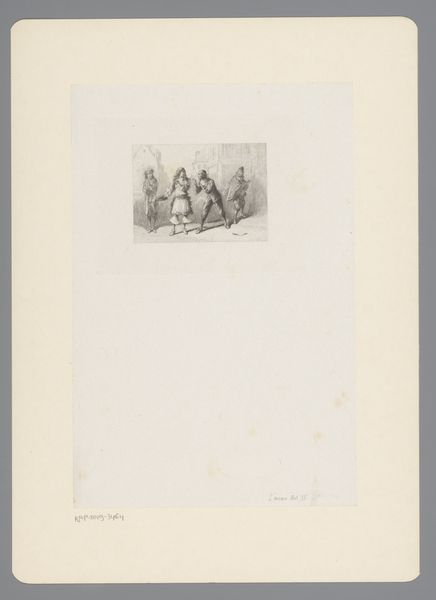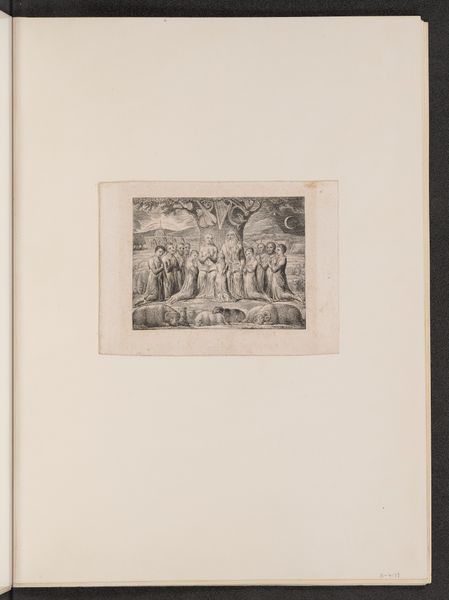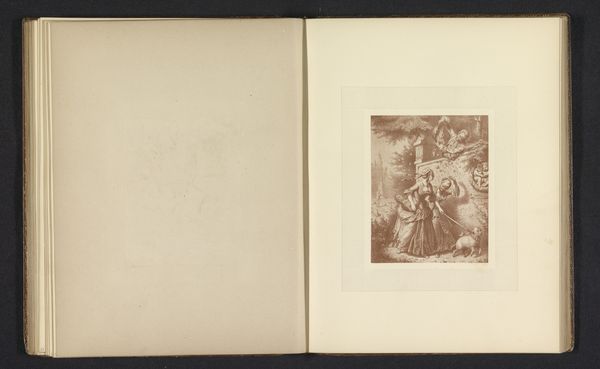
#
photo of handprinted image
#
homemade paper
#
pale palette
#
ink paper printed
#
white palette
#
personal sketchbook
#
watercolour bleed
#
watercolour illustration
#
sketchbook art
#
watercolor
Dimensions: height 172 mm, width 95 mm
Copyright: Rijks Museum: Open Domain
Curator: Léonce Petit's “Gezicht op een plein met galg,” or “View of a square with gallows,” made in 1875 using a then cutting-edge ink printing technique, offers us a particularly stark and perhaps even grotesque glimpse into 19th-century sensibilities surrounding public punishment and mortality. Editor: My first impression is one of unease. It's a rather small piece, and seeing that dense crowd beneath the dangling bodies contrasted with a band of dancing figures... the scale really amplifies the disturbing nature of both scenes. Curator: Precisely. This combination compels us to reflect on the normalization of violence. Executions were, at the time, public spectacles. How might this brutal form of social control influence or perhaps be internalized within a population? The adjacent image also calls for interpretation; Is it intended to be another layer of societal anxiety or perhaps a form of rebellious satire? Editor: Thinking about the printmaking process here is fascinating. It’s an ink print on what appears to be paper with high cotton content. The method would have allowed Petit to reproduce and disseminate these images widely. So the artist intended for this disturbing message to be seen by many people across many spaces. Curator: The choice to create multiples underscores your point about widespread exposure and prompts crucial questions about the artist's agenda. Was it intended as a form of protest against these archaic and inhumane methods, or merely as a record of these acts? Understanding the contemporary discourses surrounding capital punishment helps shed light on its potential role as commentary or social critique. It pushes viewers to confront unsettling issues of inequality and human rights abuses embedded within that period's social fabric. Editor: When you think about paper and ink, they're very ordinary materials. But by utilizing printing and imagery, Petit converted them into something extremely unsettling that would make people react. And he knew how that combination of material and picture might have a specific effect. That's powerful stuff. Curator: It truly is. It reminds us that artworks serve not only as aesthetic objects but also powerful cultural and social reflectors capable of igniting thought and action. Petit asks viewers to confront uncomfortable truths, sparking dialogues on crucial matters surrounding humanity, equity, and justice. Editor: Looking closely at it makes you realise how much we can learn about materials and manufacturing in communicating messages - both today and back then.
Comments
No comments
Be the first to comment and join the conversation on the ultimate creative platform.
